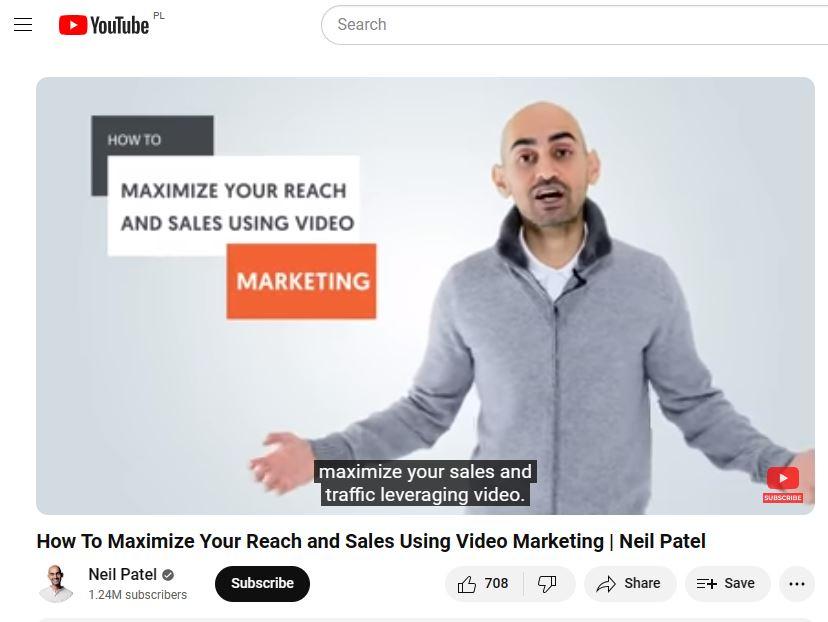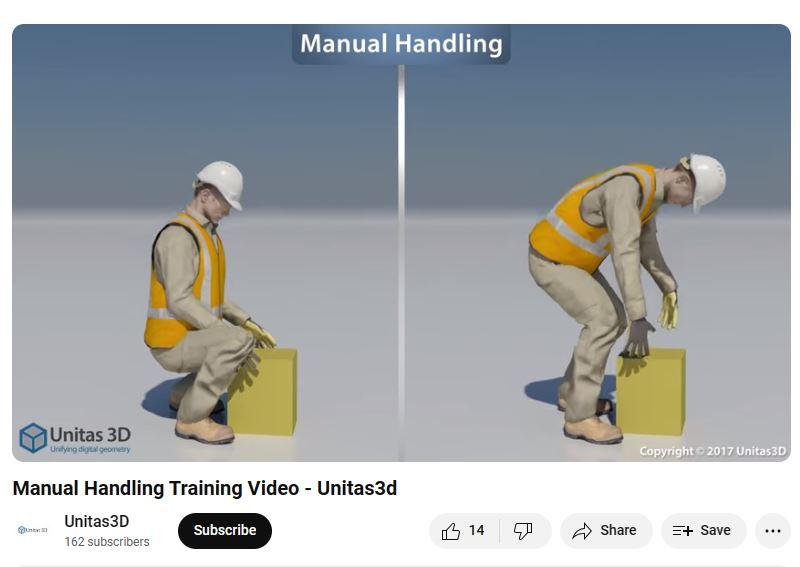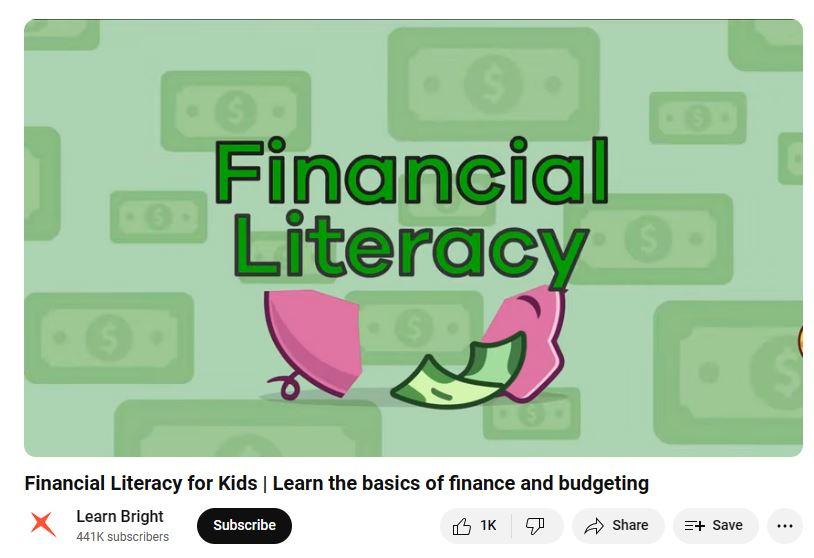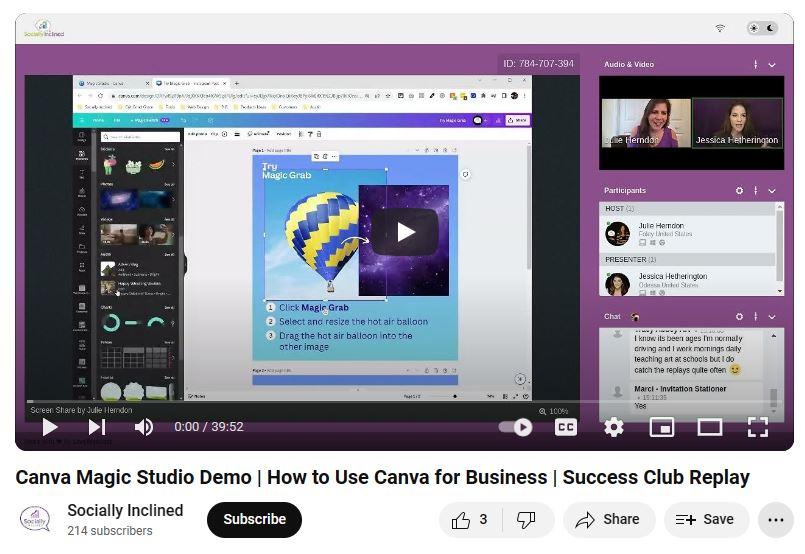The Ultimate Guide to Making Instructional Videos
Sharing knowledge has never been easier or more impactful. An instructional video is a fantastic way of helping your audience understand and engage with your content. It helps transform complex concepts into simple, digestible information. With instructional videos, acquiring new skills is just a play button away.
Want to leverage the power of instructional videos? This guide will help you sidestep common mistakes and ensure you create effective video content from the get-go.
Let’s get started!
What is an instructional video?
An instructional video is a piece of content specifically crafted to teach or explain something in an accessible and engaging way. Unlike a vlog or a music video, these pieces aim to leave you with new knowledge or skills that you didn’t have before pressing play.
For example, an instructional video can show you step-by-step how to optimize your content for SEO, making an activity that might seem daunting at first, completely manageable. Or, it might teach you how to embed a video on your website, like this one does:

Instructional videos come in handy in various settings. They can be used in educational institutions to break down complex subjects, in businesses to train employees, or even on social media platforms to engage and inform a wider audience. These videos can be found everywhere–from the classroom to the boardroom, on your website, and even on online course platforms and social media channels.
But why bother with video production when you can just write the manual? Because we simply prefer to learn from videos. A staggering 66% of people would rather watch a short video to learn about a product or service than any other way. This includes reading articles, or websites, viewing infographics, or downloading an ebook or manual.
Plus, videos are usually more effective than text because they combine seeing and hearing. This makes complex ideas simpler and learning easier for everyone.
Common types of instructional videos
Instructional content comes in several video formats. Each serves a unique purpose and is addressed to different learning needs. Here’s a closer look at some of the most popular types of videos:
- How-to videos: They’re the go-to resource for anyone looking to learn a specific task.
- They provide step-by-step instructions to help viewers accomplish something concrete, like how to maximize your reach (above) or fix a leaky faucet.

- Video tutorials: Unlike how-to videos that usually offer basic tips, these videos offer detailed guidance on more complex topics.

Because of this, tutorial videos like the one above are great for learning new skills.
- Training videos: Often used in professional settings, these videos aim to educate employees on procedures, policies, or online tools.

These training materials typically shown on online course platforms or private social media groups ensure consistency in the knowledge acquired by members of the group, making them essential for onboarding or continuous professional development.
- Educational videos: Think of these as your virtual teachers. Covering academic or complex subjects, this educational content breaks down topics like history, science, or mathematics into digestible, easy-to-understand chunks.

They are often used in conjunction with e-learning and online course platforms.
- Product demonstrations: These videos showcase how a product works, highlighting its features and benefits. They are crucial for potential customers who are considering a purchase and need to see the product in action.

Companies often put these behind a gate, meaning you need to give your email address to be able to watch them.
Whether you use it on online course platforms, social media, or other channels, each type of instructional video targets different aspects of learning and engagement. However, all share the common goal of educating the viewer.
5 steps to make and promote instructional videos
Creating a high-quality instructional video can be pretty straightforward. Follow these five steps to make and promote video content that looks professional and is effective.
1. Decide video goal
A clear goal guides your content creation, ensuring your video is focused and effective. So before you start, think about what you want your viewers to learn or do after watching your video. Is your aim to teach a skill, explain a concept, or showcase how to use a product? Your end goal will shape how you create your entire video.
When setting your video’s goal, think SMART: Specific, Measurable, Achievable, Relevant, and Time-bound. Instead of a vague objective like “teach cooking,” narrow it down to “teach viewers to bake a chocolate cake in under 60 minutes.”
With a clear video goal, it’s also easier for your target audience to achieve overall success, which, let’s be honest, is the best part of learning.
Say you’re an expert in social media marketing and you create an engaging video on Instagram takeovers with this specific goal articulated: “By the end of this video, viewers will learn how to plan, execute, and review an Instagram takeover to boost their brand’s visibility.”
After watching the video, your target audience will know in which aspects they failed, if they did. They can then easily refer to the video again and focus on learning these concepts.
2. Identify audience
Understanding who your viewers are is key to creating a successful instructional video. Consider their age, background, and what they already know about the topic. Are they beginners or more advanced? Knowing this can help you tailor your content, making it more relevant and easier to understand.
Researching your target audience is important. Look at who is already engaging with similar content or who might benefit from your video. You can use surveys, or look at comments on and other social media interactions with related videos to gather insights about their preferences and needs.
Customer Relationship Management (CRM) tools can also deepen your understanding of your audience. By analyzing CRM data, you can uncover trends and preferences.
Once you have all the information about your target audience, create audience personas. These are fictional representations of your target audience that will help guide your video creation.
3. Draft storyboard, script, summary
A storyboard ensures that your ideas are organized and clear before you begin filming. It helps you structure your content, so you know what should be shown and said in each part of the video.
Begin by outlining the key scenes or segments of your video. Simple sketches can help you to visualize the sequence and flow of your information..
Now, let’s talk about the script. If the storyboard is the what, the script is the how. It should detail how each scene should be executed, and specify the exact wording and timing of the narration and other video instructions.
When crafting your script, keep your language simple and direct. Think about how you would explain your topic to a friend. Break down complex ideas into smaller, manageable chunks.
Ensure each part of your script aligns with your storyboard and contributes to your overall video goal. This clarity and organization in planning will make the production process smoother and your final video more effective.
As a final tip, why not create a summary of what your entire instructional video is about? You can leverage AI templates for this if you don’t have the time to write. Input your script, and the tool will produce short summaries in bullet points from the long-form content. Then distribute this summary to your technical team and actors. This way, they’ll have an idea of what the project is about from Day 1. They won’t have to read the entire script to know what type of content they’re creating.
4. Capture footage and edit instructional video
Now comes the exciting part: bringing your instructional video to life. But before you press record, check your environment.
If you’re demonstrating a product or showing how to do something, make sure everything you need is within reach and clearly visible. Use a tripod or steady surface to keep your shots stable. And if you’re using a smartphone, landscape mode is your best choice for a professional look.
Once you have your footage, it’s time to edit. Use editing software, like Adobe Premiere Rush or iMovie to trim unnecessary parts, add text overlays for key points, and insert relevant images or graphics.
Keep transitions smooth and straightforward, and ensure your audio is clear and free from background noise. If you’re teaching something step-by-step, consider using on-screen annotations to highlight important steps or tips.
Finally, add some finishing touches. Background music or sound effects can enhance your video, but make sure they’re not too loud or distracting. Check the overall pace. It shouldn’t be too fast, especially for complex concepts.
5. Share video
Once your video is complete, it’s time to share it with your intended audience. Selecting the right platform is crucial.
If you are specifically targeting professionals, LinkedIn might be a good option.
For broader audiences, YouTube is a highly popular choice for eager learners. With nearly 2.5 billion monthly active users, it’s the world’s second most popular platform, right after Facebook. Don’t forget other social media channels, like TikTok or Facebook.
Just choose a social platform that aligns with your target audience’s habits and preferences to ensure your video finds the viewers who will benefit from it the most.
Note, though, that for the platforms mentioned above, your video customization options can be limited. Also, you can’t use them if you want to share instructional videos with information only select viewers should know.

This is where CincoTube can help. With the platform, you can easily customize your instructional videos by adding interactive elements like CTAs and auto-generated captions. You can also create a private video portal only select users can access. The tool enables engagement, with its comments, likes, and share features.
Whichever channel you choose, whether it’s social media, a tool like CincoTube, or even online course platforms, when uploading your video, use clear and descriptive titles and tags. A compelling description can also help viewers understand what your video is about and why they should watch it. This step is essential for making your video easy to find and appealing to potential viewers. Also, video thumbnails can make or break your content’s initial appeal, so choose an image that’s both eye-catching and relevant.
Additionally, keep an eye on analytics. While social media platforms have in-built analytics tools that provide insights into how people find and watch your videos, Cincopa offers more powerful analytics features. It gives you aggregate video stats within a chosen time frame, and even generates a video heatmap that breaks down each engagement second-by-second.
Use this data to understand what works, what doesn’t, and how you can improve your content for even better results next time.
Conclusion
A well-crafted instructional video is a powerful tool in your marketing arsenal. Now you know all the ins and outs of how to create one for your brand.
Define your video goal, identify your audience, and draft a storyboard, summary, and script. Capture your footage after that stage. Then, of course, undertake the editing process. This is where your story comes to life, and where you get to refine your message to make it as clear and engaging as possible.
But don’t stop with video creation. Every instructional video you come up with is a learning opportunity, not just for your audience, but for you as well. Take the feedback, analyze the results, and continuously improve. Your next video can only get better.
Now grab that camera and create something amazing!
About the Author:
James Westfield is the Marketing Manager for Writer, an AI writing platform designed for teams. He has over 10 years of experience in the industry. When James isn’t in the office, you can find him on the golf course.















